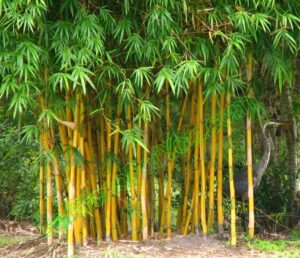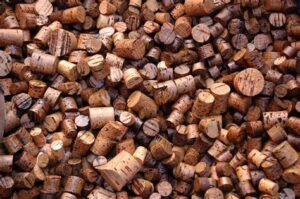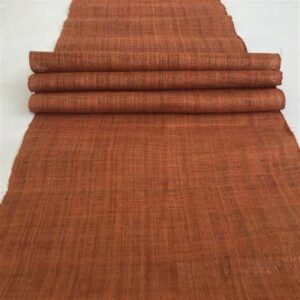What are Biodegradable Materials?
• Biodegradable materials can be safely disposed in the natural environment.
• They completely decompose and breakdown, in the presence of microorganisms like bacteria and fungi present in soil and water.
• A good biodegradable material completely breaks down, in less than a year, and leaves no residues or traces in the surrounding location.
Our motto to curb plastic pollution inspires us to move forward towards more sustainable ways of life. We are increasingly searching and testing for materials and products that are reusable, zero-waste, and eco-friendly that do not contribute to the current huge waste crisis.
There are myriad of options to choose for various purposes. However, each of them has its own advantages and disadvantages. Let us learn about some of the important and practical biodegradable materials in order to utilise them in our day-to-day activities:
1: Bamboo

Pros:
• Bamboo is a completely natural and renewable resource that rapidly and abundantly grows in many different climates.
• It is a crop that regrows after harvesting without needing to be replanted.
• Additionally, it is also a good option for soil health and uses less water than other timber crops.
• Bamboo is a fast-growing and sustainable crop that is easily accessible and economically inexpensive.
• Bamboo has properties such as natural pest resistance, flexibility, and durability that make it a good material choice for multiple purposes.
• Bamboo has become one of the most popular zero-waste, eco-friendly, and versatile materials.
• It is used in everything from textiles (wet wipes) to wooden items like reusable utensils, crockery, cutlery and drinking straws, water bottles, furniture, paper, and tooth brushes.
Cons:
• Bamboo products may cause allergies in susceptible people and is susceptible to pests and fungal molds unless it is chemically treated.
• If bamboo is irresponsibly grown it may spread rapidly and invade nearby ecosystems.
2: Cork

Pros:
• Cork is obtained from the barks of Cork Oak (Quercus suber) mature trees. So, trees do not need to be cut down for harvesting, which makes them a very sustainable crop.
• Cork is an incredible material as it is light in weight, waterproof, buoyant, elastic, and has fire-retardant properties. It is fully biodegradable and recyclable.
• Cork is a highly pliable and versatile material and makes a great alternative to plastics, foam, leather, wood, and some fabrics.
• Additionally, Cork Oaks absorb more carbon from atmosphere, after the bark has been harvested, as the trees kick into overdrive to regrow the bark.
• Cork is used in a huge number of different applications in the form of wine bottle corks, flooring, purses and wallets, shoe soles, insulation, coasters, building blocks, buoys, musical instruments, and sports equipment.
Cons
• There are no notable disadvantages to cork material.
3: Tipa Bio-plastic Polymers

Pros:
• Tipa bio-plastics are completely biodegradable and home compostable. They are made from plant-based materials that break down just like any other plant matter.
• Tipa can be made into resin, multi-layer film structures, and laminates that can be used for packaging which requires to be durable, sealable, transparent, waterproof, and can be easily printed on.
• Tipa plastic is mainly used as packaging material in the food (bread bags, tea bags, and salad packs) and fashion (garment bags and zipper bags) industries.
Cons:
• Tipa material is not yet widely available and currently its uses are limited to packaging.
• Presently, there are no consumable items available at the market.
4: Hemp

Pros:
• Hemp variety of the Cannabis (C. sativa) plant is specifically grown for industrial purpose. Hemp is completely biodegradable and a very sustainable crop.
• It is similar to Bamboo as it grows phenomenally fast using very less water. It is hardy to a wide variety of climates making it a renewable crop without extensive use of pesticides.
• Hemp has been used as a naturally strong and durable fibre for textiles for over 50,000 years as it has three times the tensile strength of cotton. Moreover, this plant material can be refined into many different forms and used to produce a wide variety of products.
• Hemp has many different commercial uses including yarn and textiles for fabrics to make clothing and home furnishings, rope, and paper.
• It is also used to make paint, insulation, bio-fuel, and biodegradable plastics.
• More recently, there are an abundance of products that contain hemp oil, including soaps and cosmetics.
Cons:
• Hemp fabric easily creases and dyed colours tend to fade after multiple washes (like most natural plant fibres).
• Hemp crop is not produced at a large scale so the products are a little bit expensive.
• Some people have a negative association with Hemp because it comes from the same plant species as Marijuana.
